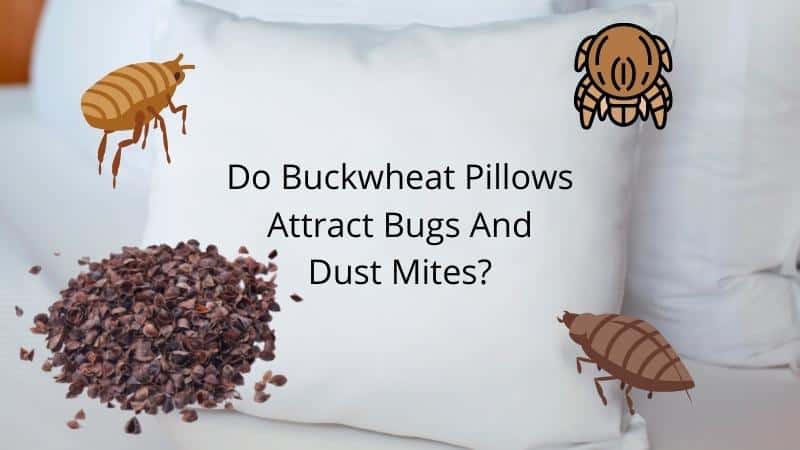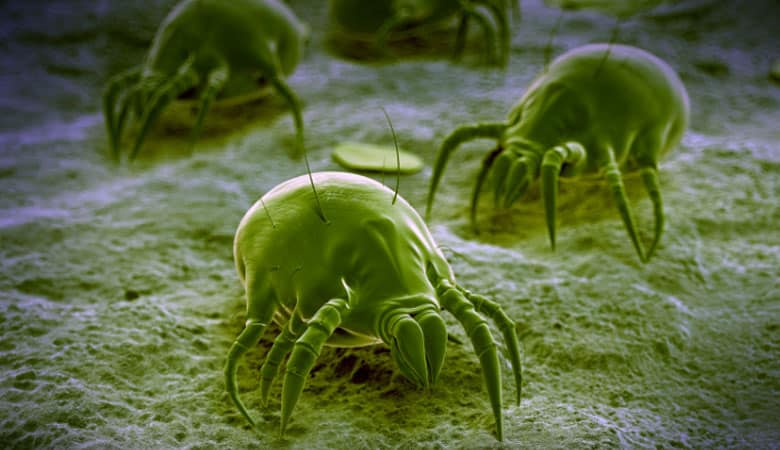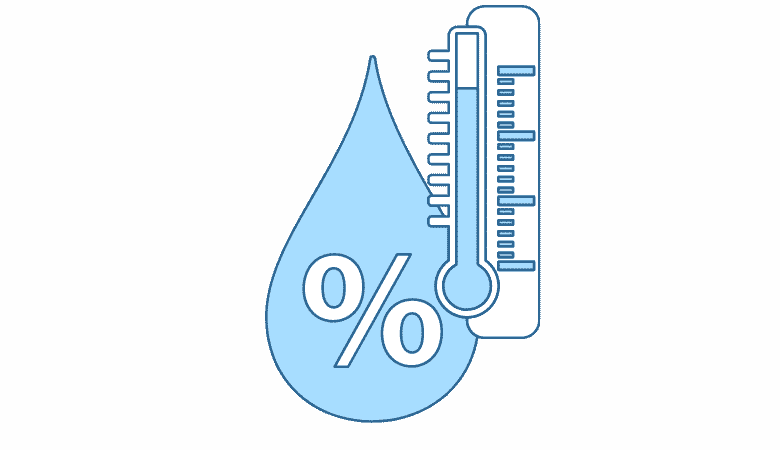This post is a part of the complete buckwheat pillow buyers guide
There has been a lot of ongoing talks about the buckwheat pillow.
These Japanese-originated pillows have gotten a lot of attention for their adjustable nature and firm position serving as a strong reinforcement for the neck and head.
Buckwheat are seed-like grains that are native to the Asian community.
The seed is considered a fruit and grows within a husk which acts as a shell to the seeds. The husks were then further utilized since it isn’t edible to serve as fillings inside what is now called a buckwheat pillow.
Also known for its highly simplistic nature, the buckwheat pillows provide support for proper sleep posture and spinal structure.
One common question regarding buckwheat pillows is whether or not the attract bugs and/or dust mites. Read on to learn more.
Do Buckwheat Pillows Attract Bugs?

How annoying would it be if while sleeping, you’re being disturbed by bugs or insects? That would be very uncomfortable and unpleasant.
Pillows are quite known to contain a high level of indoor allergens and endotoxin. However, does the buckwheat pillow attract bugs/insects?
From both manufacturers and reviews collected from the usage of buckwheat pillows, it has been stated that the pillows are bug-resistant. Buckwheat pillows are made from buckwheat seed hulls and not the seeds themselves, meaning they provide no nutritional value for insects, mold and bacteria to thrive in.
These hulls are also properly washed and cleaned before being placed inside the buckwheat pillows.
Circumstances Where Buckwheat Pillows May Attract Bugs
With that said, there are special circumstances where bugs may be attracted to buchwheat pillows, and they are as follows:
1. Poor quality buckwheat
If the buckwheat pillow is of poor quality, the chances of it being bug infested goes up. This is because the hulls might have been improperly cleaned or done shabbily without putting the users into consideration.
Now, most companies disclose their buckwheat sources and other materials used in the production of their buckwheat pillows to assure consumers and the general public that their pillows are of high and great quality.
Also, most reputable companies are now going for locally and organically produced buckwheats that are free from any form of pesticide, insecticide, or any chemical used to grow them. This would increase the guarantee of it being hypoallergenic as well as bug-resistant.
So, always check for these things before purchasing a buckwheat pillow.
2. Poor care and management of your buckwheat pillow
If a buckwheat pillow is poorly managed and not properly taken care of as required and expected of the user, that could increase the likelihood of bugs and insects being attracted to them.
Do Buckwheat Pillows Attract Dust Mites?

Since the buckwheat hulls provide good air flow inside the buckwheat pillow, the amount of dust mite build up will be less than in other pillows. The reason for this is the fact that dust mites prefer a stable and dark environment which the buckwheat pillow doesn’t offer and hence makes it less habitable.
However, as good as this sounds, research has shown that dust mites can’t be reduced entirely. Dust mites are one of the topmost common allergens and research has shown that no pillow, whether it is hypoallergenic or not, is fully resistant to dust mites.
So, the buckwheat pillow, just like any other pillow, is not immune to dust mites, but it will attract less dust mites compared to other pillow types.
How to Prevent Your Buckwheat Pillow From Being Affected by Bugs and Dust Mites
Since it has been stated above that buckwheat pillows aren’t completely immune to bugs and dust mites, we might as well figure out how to prevent such infestation.
Below are a few recommendations you can follow if you want your buckwheat pillow to be as bug, insect, and dust mite-free as possible.
1. Buy quality buckwheat pillows
First of all, if you do find bugs inside your buckwheat pillow, there is a high chance you bought a pillow of low quality of which the buckwheats weren’t properly hulled thereby attracting bugs.
To avoid such a situation, you must find quality buckwheat pillows from a trusted store either online or in a physical store before buying them.
Don’t go for what is cheap just to save money but rather, go for the quality as it is the best choice you can make for yourself.
Check for reviews and feedback to confirm if the store you wish to purchase from can be trusted and also look up the materials they used to manufacture their buckwheat pillows before finally purchasing it.
2. Wash your buckwheat pillow cover
Another step you can take is by removing the buckwheat hulls from inside the pillow, that is if it is an adjustable one, turning the cover inside out, and washing the pillow cover inside your washing machine.
After which you should air-dry the cover before placing the buckwheat hulls back in. By doing that, you have chased all the bugs and insects that could have been inhabiting there.
3. Reduce house humidity

As regards to dust mites, a preventive measure is to reduce the humidity in your house. Research has shown that dust mites only appear in environments with high humidity.
So, if your environment’s humidity is less than fifty percent 50%, the chances of you having dust mites in your buckwheat pillow drops.
Also by using dust mite cover such as vinyl or plastic covers, it can prevent foreign materials from entering the buckwheat pillow. But this comes with a disadvantage. The negative aspect of it is that it prevents proper airflow in the pillow which would result in heat and most likely discomfort.
4. Good hygiene
Another way to protect your buckwheat pillow from bugs or dust mites infestation is by taking proper care of your pillow. You do this by washing the covers as often as you can.
Also where any liquid spills on the pillow, you can change the buckwheat hulls inside the pillow, though just the affected part. This would enable the buckwheat hulls to remain firm, fit for the purpose you purchased them for. However, do not attempt to wash the buckwheat hulls themselves.
5. Use an extra pillow case
Keep your buckwheat pillows in extra pillowcases. This will prevent the actual cover from being stained with abrasives or oily surfaces that when they seep through, can damage the buckwheat husks or cause molds and bacteria.
6. Research on the buckwheat pillow you wish to purchase
You should also check how the buckwheat hulls have been treated after they were harvested. Buckwheat hulls should be air cleaned and air dried to remove debris and dust from them.
Sometimes, organically grown buckwheat hulls from outside a country can be fumigated upon entering the country which is why it is important to check where the buckwheat hulls have been grown before they were made into pillows.
7. Go for an adjustable buckwheat pillow
Check to see if it is adjustable. Not all companies offer the adjustability feature and you need this for future use.
There would be times when you would like to sun dry the buckwheat husks or wash the pillow cover, or it could be that you need to change, remove from or add to the number of buckwheat hulls in your pillow to suit your needs hence, the need of this useful feature.
This adjustability feature is mostly in the form of a zipper, commonly an invisible zip that is flexible and working well. With this type of buckwheat pillow, you can control bugs and dust mites that want to disturb your use of the buckwheat pillow.
Some of The Best Buckwheat Pillows
Below are some recommendations of buckwheat pillows you can buy;
- Beans72 buckwheat pillows
- Hullo Buckwheat Pillows
- Sobakawa Traditional Buckwheat pillows
- PineTales Buckwheat Pillow- cooling
- PineTales premium organic Buckwheat Pillows
- Turmerry Sobakana Buckwheat Pillows
Conclusion
From all being said, it is hard to conclude whether the buckwheat pillows are dust mite resistant and do not attract bugs. It is rare for a pillow to be dust mites resistant so the buckwheat pillow is no exception.
But, it can be said that the bugs and dust mites found inside the buckwheat pillows are relatively low and some of them are a result of the company’s negligence in providing well-cleaned hulls and also the consumer’s fault where he or she fails to maintain proper hygiene and give the pillow the care it needs and when needed.
You should also confirm whether you’re allergic to buckwheat or the hulls as if you are, you could suffer from serious negative effects. And some might in such situations think it is as a result of an insect bite or reaction from dust mites. The buckwheat pillows are not peculiar to people of a particular age and so both children, adults, and old people can use them.
When you use it for your child, you should take proper care of it, although there are little chances of it having bugs, you don’t want your child to be disturbed by bugs either in the rare cases where they surface.
Buckwheat Pillows: A Complete Buyers Guide – Parts:
1. Why Use a Buckwheat Pillow? The Benefits & Drawbacks
2. How Long Do Buckwheat Pillows Last? (How to Make Them Last Longer)
3. Do Buckwheat Pillows Attract Bugs And Dust Mites?
4. How to Sleep on a Buckwheat Pillow
5. Can Buckwheat Pillows be Heated up?
6. Best Buckwheat Pillows of 2022 – Compete Review
7. What Does a Buckwheat Pillow Feel Like? (Comfortable, Weird?)
8. Can Buckwheat Pillows Cause Allergies?
9. How to Clean and Dry a Buckwheat Pillow: Step by Step Guide
10. Do Buckwheat Pillows Stay Cool All Night?
11. Do Buckwheat Pillows Smell?
